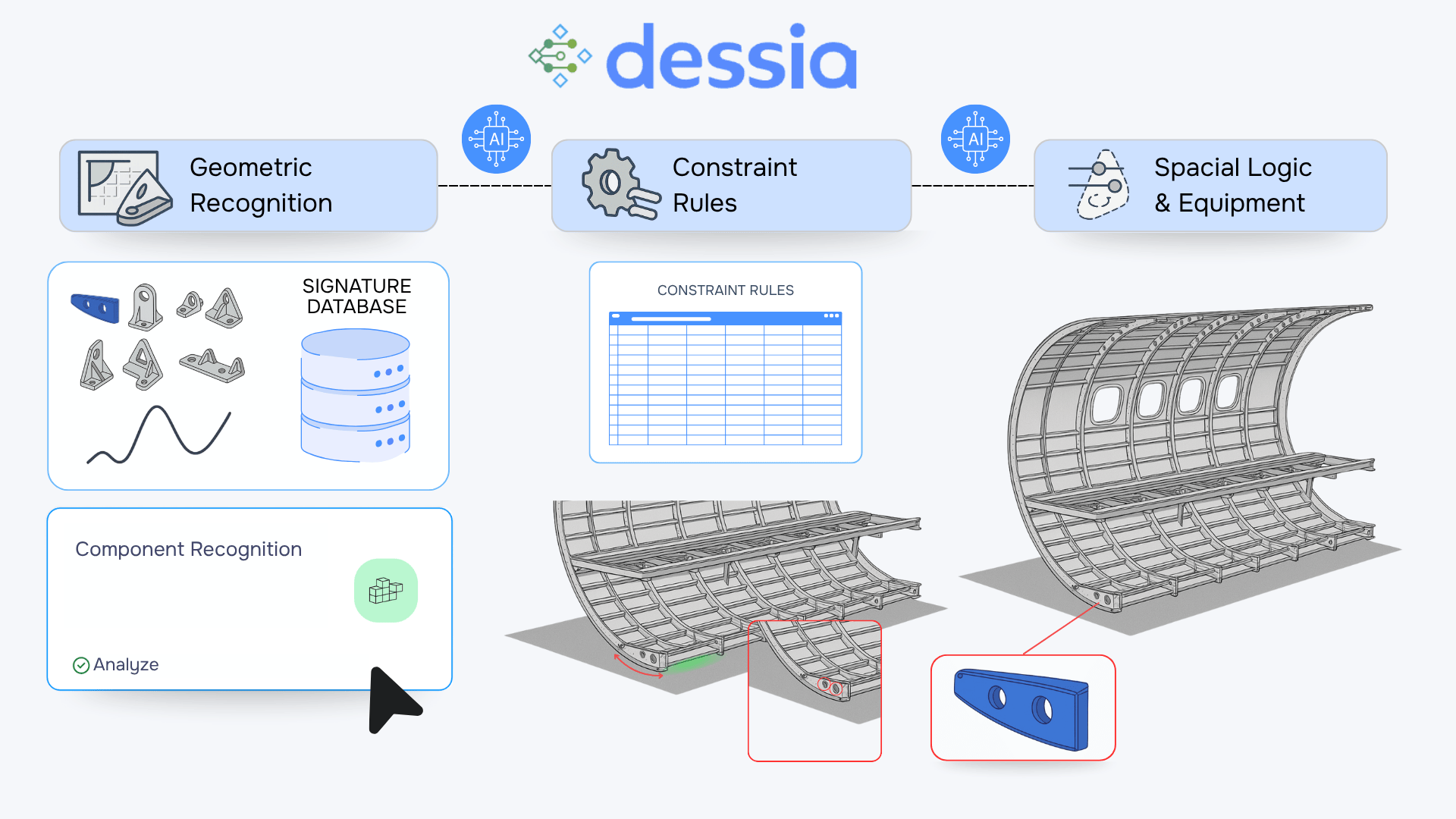From geometry recognition to intelligent reuse: Leverage your 3D data with AI to generate efficiently new designs
Dessia’s AI-driven platform enables automated part reuse by combining geometric similarity with spatial constraint, and equipment logic. Instead of a standalone tool, the similarity engine is used within custom AI-Apps to drive fast, context-aware decisions across design and maintenance workflows.
Overview
As product complexity grows and design variability expands across several industrial sectors, the ability to systematically reuse, adapt, or substitute components becomes a critical enabler for both engineering efficiency and operational agility. Whether configuring new brackets for aircraft or vehicles, or responding to structural repairs in post-delivery service, engineers frequently face the same recurring challenge: locating parts that are geometrically similar —but not necessarily identical—to those previously designed or deployed.
Dessia’s platform addresses this with a modular, AI-powered approach. Its geometric similarity engine, combined with other libraries such as constraint checking, spatial analysis, and rule logic, powers custom AI-Apps tailored to specific engineering workflows. These Apps enable teams to detect, compare, and validate or redesign from similar parts across large CAD datasets—while factoring in real-world constraints like mounting conditions, environmental context, or legacy design rules.
This capability not only reduces redundant modeling work and part proliferation, but also supports intelligent reuse, accelerates transformation decisions, and enhances the reliability and scalability of after-sales support workflows.
Challenge
In design: Redundancy and lack of reuse
In large engineering programs, designers frequently recreate—from scratch—parts that already exist elsewhere in a database from former programs, simply because they cannot identify similar components across complex databases. This leads to:
- Wasted modeling and validation effort
- Excessive part proliferation
- Higher costs in tooling, production, and sourcing
In operations: Limited spare part availability
When an aircraft or vehicle is in service and a component breaks, support teams often face long lead times due to:
- Missing stock
- Obsolete references
- Siloed documentation
Today, identifying alternative parts relies heavily on tribal knowledge and manual checks, which don’t scale under time pressure.
Solution: AI-driven geometric similarity computation
Dessia’s similarity solution removes these roadblocks by automating geometric comparisons across thousands of parts.
How it works:
- Signature extraction: The engine converts the model into a statistical shape signature
- Preprocessing & input: After all geometries have been processed to generate a signature database, a reference part (3D CAD file) is submitted for comparison
- Database matching: It searches the organization’s CAD database to compute global and local similarity rates
- Results: Ranked matches are presented with numerical confidence scores, dimensional data, and 3D comparison visualization and any attached related meta data (for ex. mass, cost, tooling ref, vendor…)

This empowers designers to:
- Detect reuse opportunities during design
- Identify viable substitutes for repairs and localize zones that require transformation to match
- Make fast, traceable decisions
Beyond recognition: A systemic AI powered assistant for design generation
While Dessia’s similarity engine is introduced as a geometric comparison tool, its actual architecture and operational depth go far beyond simple shape recognition. It is a modular component that can be connected to other algorithmic libraries within the Dessia platform to build custom AI-Apps tailored to specific engineering workflows. These AI-Apps combine geometric recognition with constraint rules, spatial logic, or equipment data to automate decision-making across multiple layers.
Not just a recognition feature
At its core, such a workflow can not only identify similar parts, but also can interpret function, geometry, and context:
- Matches are not based solely on surface comparison, but on engineering intent and structural relevance
- Matching logic can be adapted to design constraints, usage environments, and reference rules
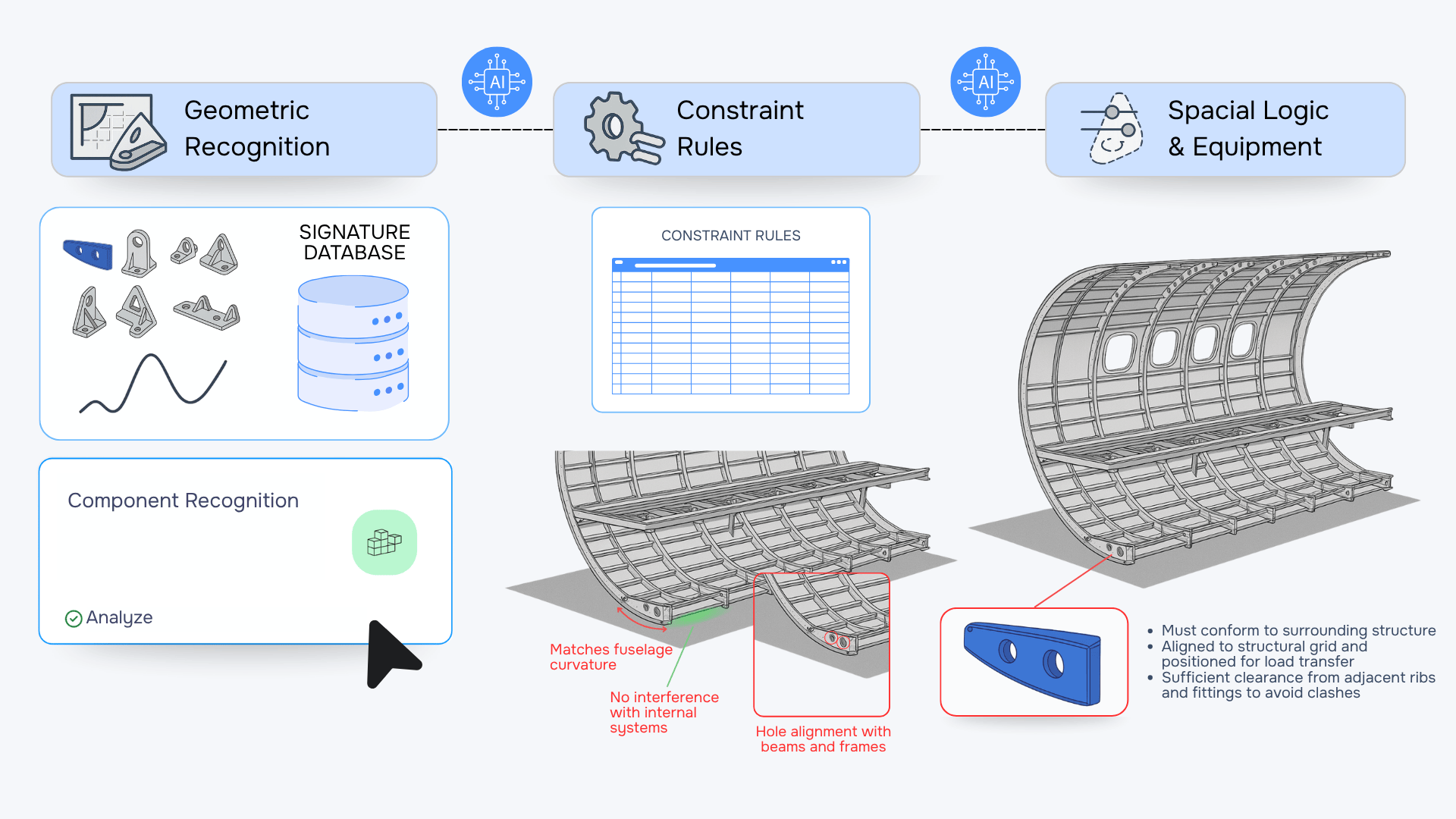
System connectivity and data flow
The similarity engine can be integrated into larger workflows through Dessia’s platform :
- Can interface with equipment databases, CAD/PLM systems, or design automation tools
- Enables data propagation between systems
This makes it suitable for embedding into automated design workflows.
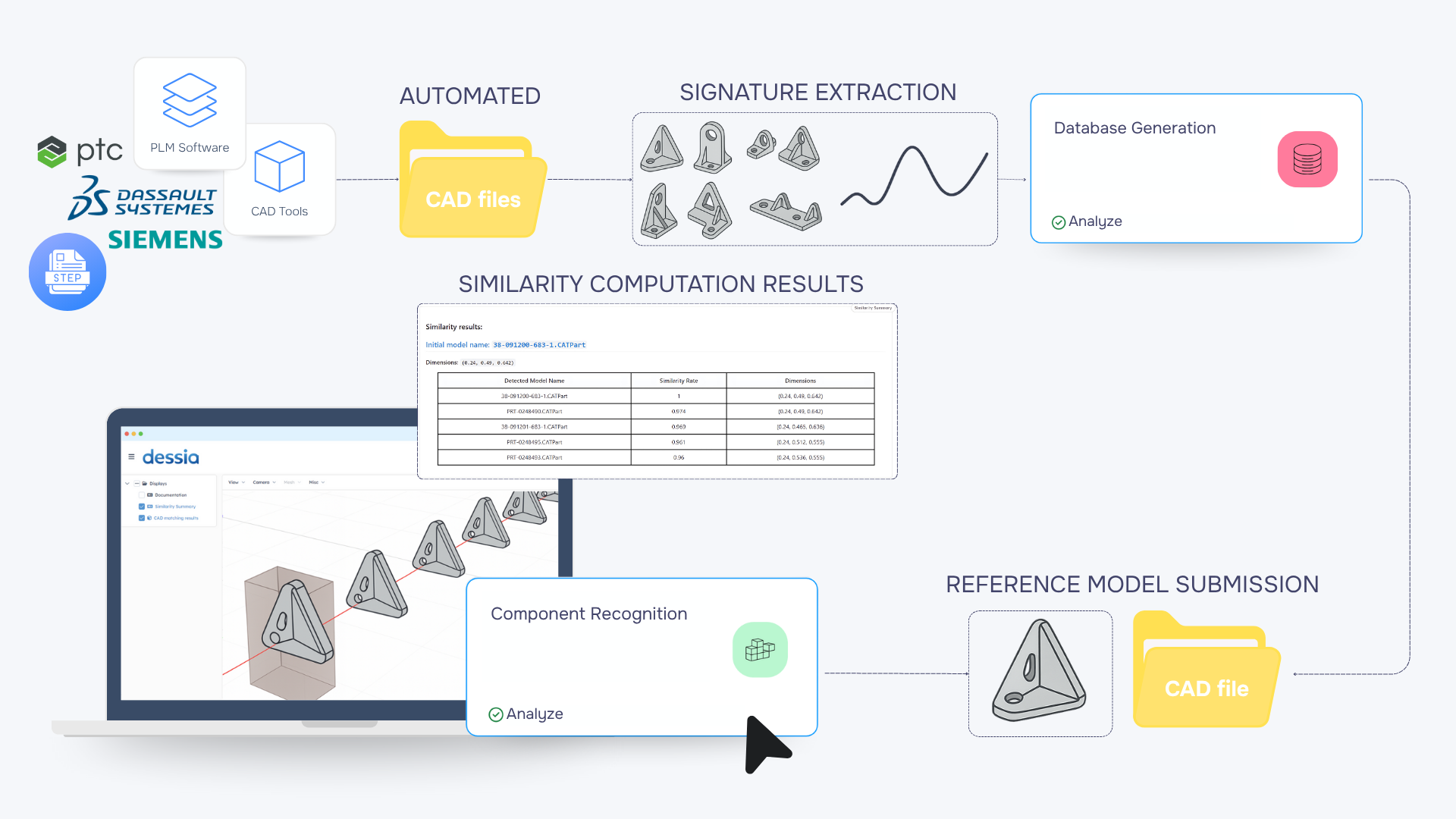
Application to bracket design
One of the key industrial applications involves the assisted design of brackets and supporting components:
- Structural legacy bracket recognition from historical CAD models, including non-parametric or unstructured data
- Automated identification of bracket positioning based on nearby equipment and supporting structure
- Calculation of available volume between equipment, ducts, harnesses, and structural elements
- Proposal of candidate brackets from internal libraries, filtered by both geometric fit and usage context
This transforms the similarity feature from a passive lookup function into a generative design assistant capable of:
- Suggesting bracket design to start from
- Validating integration feasibility
- Enabling up and downstream automation
Environmental awareness and constraint adaptation
A workflow could combine the similarity engine with spatial analysis:
- It measures and interprets geometric relationships within a given assembly
- It uses this information to automatically constrain part selection, ensuring that retrieved parts are not only similar in form, but viable in function and location
This enables engineering workflows such as:
- Rapid reconfiguration of bracket assemblies under new constraints
- Automated design reuse in variant management (for ex. multi-model product platforms)
- Localized part adaptation in response to layout modifications or late-stage changes
Addressing supply gaps through geometric similarity workflows
In operational settings, unplanned part unavailability is a recurring challenge, whether due to supplier obsolescence, stock depletion, or extended re-manufacturing lead times. Instead of initiating emergency production, engineering teams can leverage Dessia’s similarity-checking workflows to identify existing parts that meet functional and geometric requirements.
By combining geometric signatures with spatial awareness and constraint logic, these workflows make it possible to:
- Identify parts across the library that closely match in shape and functional intent
- Visualize local deviations to assess potential rework needs
- Filter results based on context, such as mounting constraints or interface compatibility
- Accelerate validation and sourcing, often enabling same-day resolution
This reuse-driven approach helps reduce downtime, avoid unnecessary procurement, and extend the lifecycle of existing designs — all while ensuring that substitute parts remain viable in both form and function.
Conclusion
Dessia’s geometric similarity engine is more than just a matching tool; it’s a modular capability embedded within custom AI-Apps that enable structured, scalable reuse and substitution in complex engineering environments. Rather than acting alone, it works alongside other logic modules such as spatial reasoning, constraint rules, and equipment context to address two critical challenges: Part duplication during design, and inefficient component replacement during maintenance.
When integrated into tailored workflows, these AI-Apps allow design engineering teams to:
- Reduce design effort and avoid design blocks through validated reuse
- Accelerate development by reusing and adapting existing geometries
- Identify compatible substitutes based on both geometric and contextual fit
- Support traceable, deviation-aware decision-making
By connecting CAD data to real, automated engineering workflows, Dessia brings structure, speed, and reliability to reuse processes that were previously manual, inconsistent, or undocumented.
As product complexity increases and teams face growing pressure to do more with less, Dessia’s platform becomes a strategic enabler, supporting scalable automation, knowledge retention, and smarter reuse across the product lifecycle.
Keep exploring - Discover more case studies
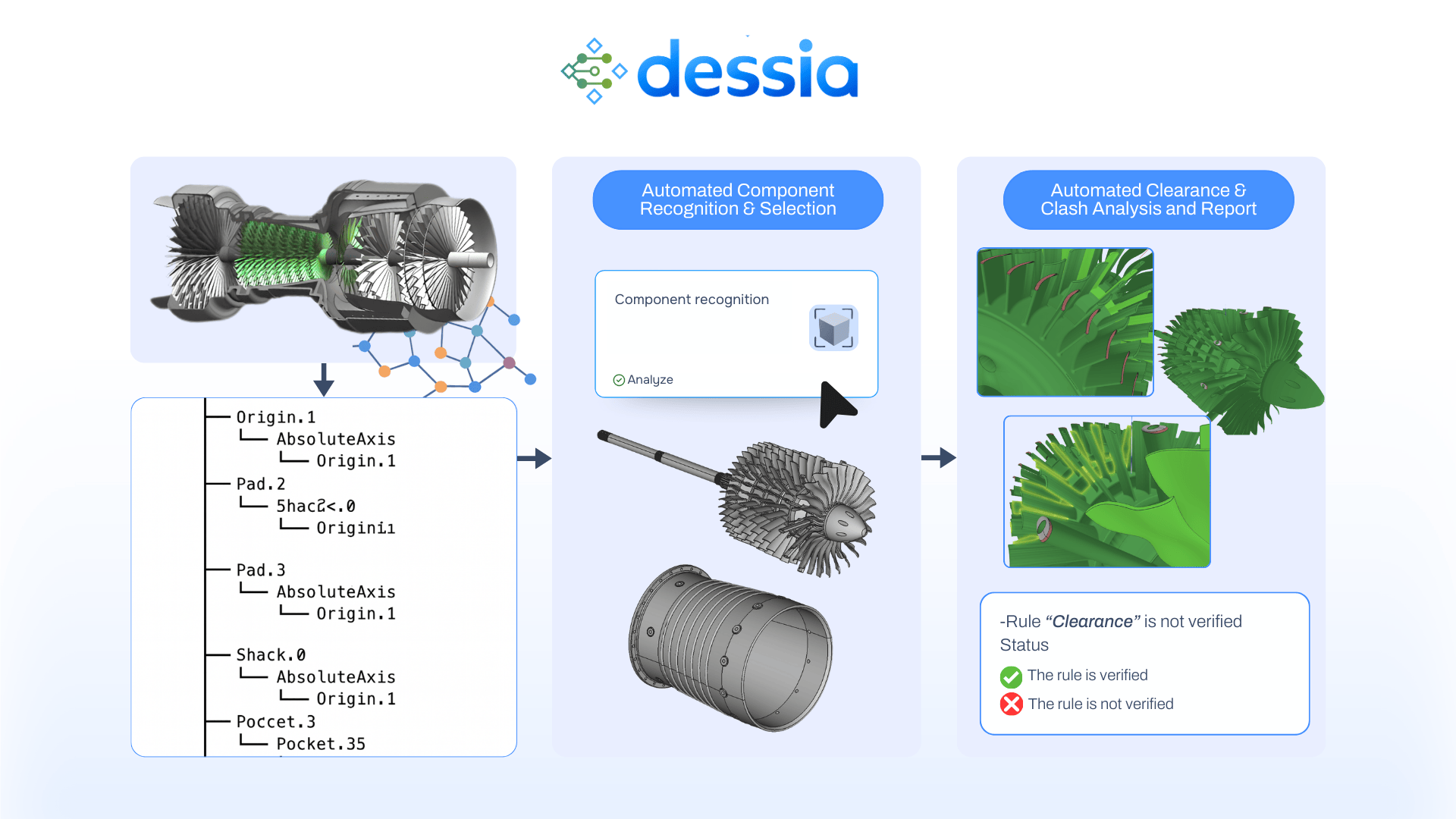
AI Verification & Validation
9
min reading

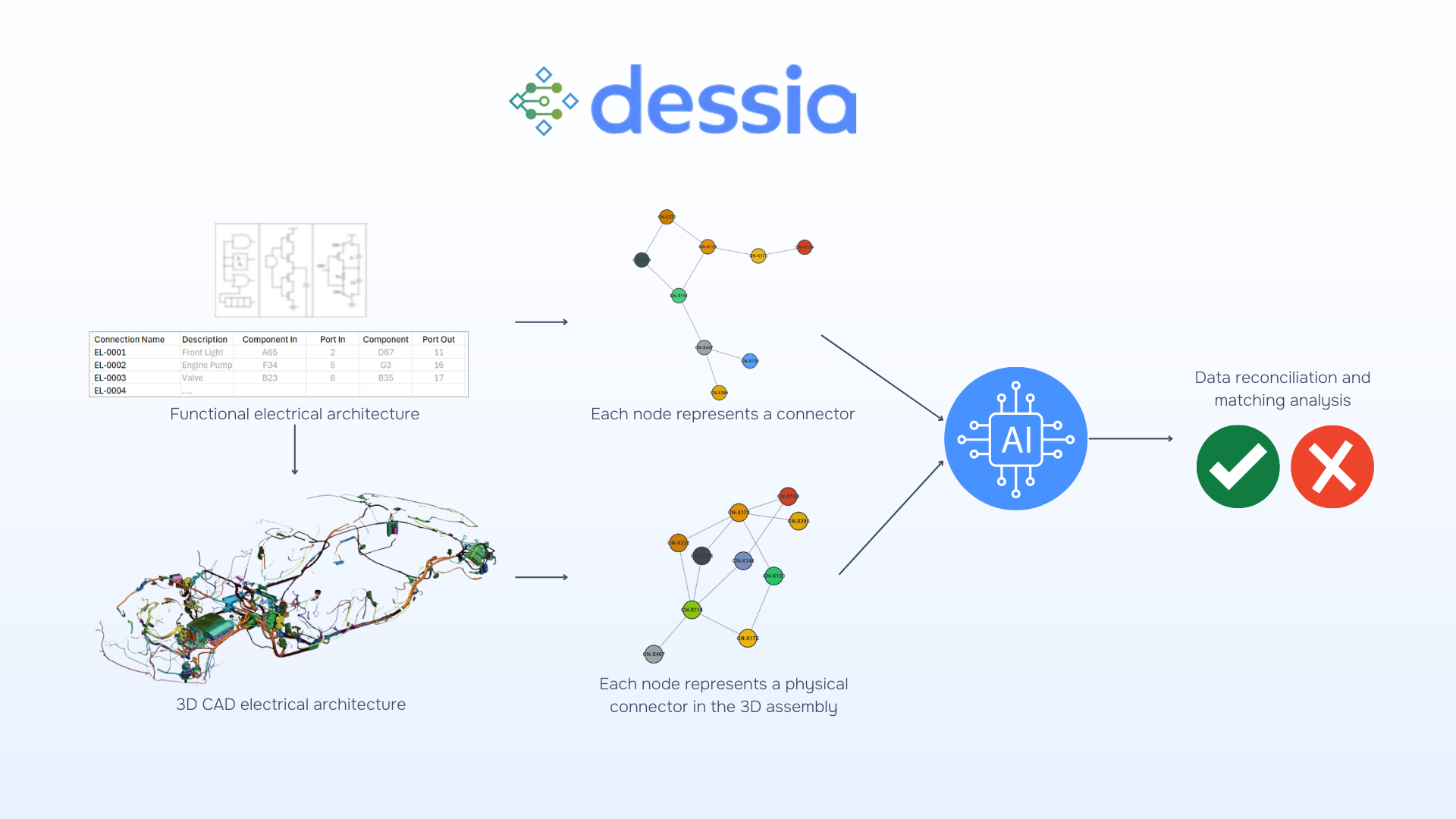
AI Verification & Validation
8
min reading

